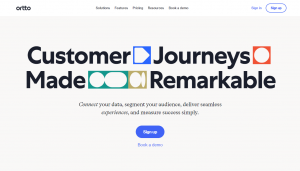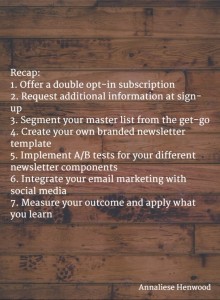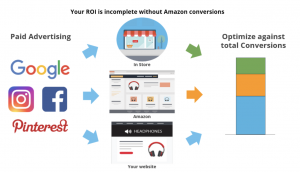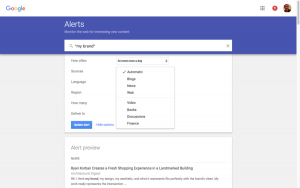Eleven per cent of internet-enabled devices use ad blocking software, according to PageFair’s 2017 Adblock report. Not only that, 77% of American ad blocking users say they leave sites that are designed to not work when ad blocking software is enabled in the browser.
You can view the PageFair slide deck at the end of this article. Let me first share this graph, from the report, showing the growth of ad blocking on both desktop and mobile – which is growing at a faster rate.

The internet is awash with articles advising on how to block ads in various guises:
- How to block ads in Windows 10
- How to block ads in Android apps, games and browsers
- How to block annoying online ads
- Getting started with Adblock Plus
While compiling that list, I clicked through to one article with the title ‘How to block ads from mobile browsers and apps using Adaway tutorial’. I couldn’t see the article because it was obscured by TWO pop-up ads, as you can see from this image below.

That irony is what I want to talk about in this article. The PageFair report shows the biggest reasons people use ad blocking software.
- 30% fear viruses and malware
- 29% dislike the interruptions
- 16% experience speed issues
- 14% think there are too many ads
A majority of the consumers surveyed cited more than one reason for using an ad blocker. The survey also revealed these statistics:
- 52% of ad-blocking users prefer static banner ads
- 35% would like to skip video ads
- 31% dislike non-skippable video ads the most
- 23% dislike autoplay audio
Statista reports that digital ad spend in the UK has risen to £18.79 billion (presumably that is an American billion and not a British billion – look it up).

Source Statista – UK digital ad spend, 2006 to 2017
It doesn’t take a genius to work out that, if eleven per cent of the population is using ad blockers, that is a huge chunk of potential advertising revenue that publishers are not getting.
Advertisers and publishers only have themselves to blame
You could say that an 11 per cent loss against a market worth £18 billion is acceptable. Every business has a bit of shrinkage, right?
Consider this, though. The PageFair report says that only 1% of the UK and US mobile population is using ad blocking software – saying this is because there is no widely known solution in the US and Europe. In China, 13% of mobile users have ad blockers, 58% in Indonesia and 28% in India.
Once mobile users become more savvy, they will start blocking ads. Who wants to be on a quiet train, trying to read the news and suddenly have sound blasting out of a video advert that can’t be skipped?
I like to read the news online. I go to top media sources like BBC News, Sky, Telegraph, Guardian, as well as American sites like CNN, Washington Post, Fox News, MSNBC, New York Times.
Most of the time I am unable to simply read the news, because a number of obstacles get in the way. This happens on both desktop and mobile.
- The page initially loads and then keeps reloading because it is trying to display a massive header banner or a wrap-around take-over ad.
- The page scrolling freezes or jumps about because of a video or other display ad loading into the content, re-writing the page height and other dimensions.
- A video plays where I can’t see it. I have to scroll back up to find it and pause it. Sometimes, there is no pause button, so the only way to stop it is to disable my volume or close the page completely.
- The page takes a long time to load and be usable. Usually I give up and don’t bother reading – I can search Google News for another source.
- Large banners block the whole page.
- Far too many adverts dominating the layout (see my previous post about this – Is advertising more important than user experience?).
I don’t use ad blockers, but I am thinking about it
I don’t use ad blocking software because I like to know that, when I visit a website, I am seeing it as it is meant to be. Also, I don’t mind advertising in principle. I click on search ads in Google occasionally, I click on remarketing banners sometimes (or at least they serve to give me a brand reminder even if I don’t click).
What I hate is when advertising tries to be the experience. It is not – unless it is well designed, creative and entertaining. Even then, it shouldn’t get in my way. It shouldn’t stand in front of me like a chugger or a dodgy sales person trying to stop me going about my business.
I get that advertisers need to keep coming up with new ways to attract our attention. They keep telling publishers how larger formats, pop-ups and autoplay videos are lucrative, and publishers keep devaluing their content by handing over more of their on-page real estate to advertisers.
The more that happens, the faster the growth rate will be for the adoption of ad blockers.
Some statistics about the UK digital advertising market
Internet Advertising Bureau UK market stats
The IABUK and PWC teamed up to compile statistics on ad spend in the UK. Here are some numbers.
- Display accounts for 33% overall (paid search takes a large chunk of the rest)
- Within display, 38% are banners, 29% is native content and 30% is video
- On mobile, display accounts for 52% of digital advertising
- Native content takes the largest chunk, with video being a close second
- Source: IABUK.net/adspend
The PageFair 2017 Adblock Report
“The state of the blocked web”- PageFair 2017 Adblock Report from PageFair
Digital & Social Articles on Business 2 Community(112)
Report Post







